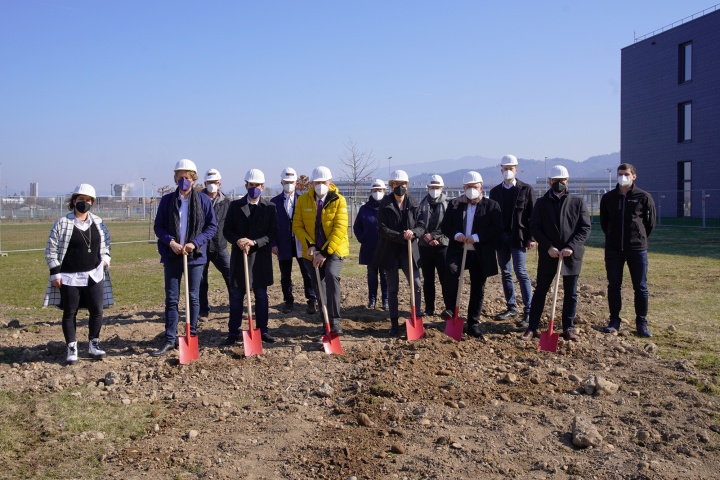Construction has started on the upcoming Pavilion, where the Clusters of Excellence IntCDC and livMatS will research future-oriented construction methods
With a groundbreaking ceremony on 10 March 2022, the construction of the livMatS Biomimetic Shell @ FIT Pavilion at the Freiburg Center for Interactive Materials and Bioinspired Technologies (FIT) at the University of Freiburg's Faculty of Engineering has started. At the building demonstrator, designed by the IntCDC Cluster of Excellence at the University of Stuttgart, researchers from the Stuttgart Cluster and the livMatS Cluster of Excellence at the University of Freiburg will develop and research sustainable materials and alternative construction methods.

The research demonstrator will consist of a 345 square meter biomimetic shell structure made of wood in lightweight construction. Inspiration for the individual panels of the shell comes from the modular skeleton of the sea urchin, a particularly light yet stable bioogical model. "This is a major key to this construction method," explains Prof. Dr.-Ing. Jan Knippers, deputy director of the Cluster of Excellence IntCDC. "The geometry of the wooden shell is adapted to the flow of forces and can be manufactured economically." Developed prototypes are being tested on the building, such as adaptive shading elements and a thermally activated floor slab that stores and releases heat.
"Our vision is to run the building in an energy-neutral way," says Prof. Dr. Jürgen Rühe, a member of the livMatS spokespersons team. "That's why we'll also be doing research on the building on how we can harvest energy from the environment." The pavilion will create a 200 square meter ideas lab and will serve as an extension of the existing IdeasFactory@FIT located at the FIT. "The pavilion will demonstrate the great potential that lies in interdisciplinary bioinspired research for sustainable architecture in the 21st century," says Prof. Dr. Thomas Speck, a member of the livMatS spokesperson team.
"The basis of this building is a cooperation that has already existed for 15 years. We are pleased that we can now once again work together with our colleagues in Freiburg," says Prof. Achim Menges, director of the Cluster of Excellence IntCDC. "What's special here is that two clusters of excellence from very different disciplines collaborate and, as the building will prove, generate great synergy effects." Another key component is the transfer of research, significantly supported by müllerblaustein HolzBauWerke GmbH and Moser GmbH & Co. KG.


